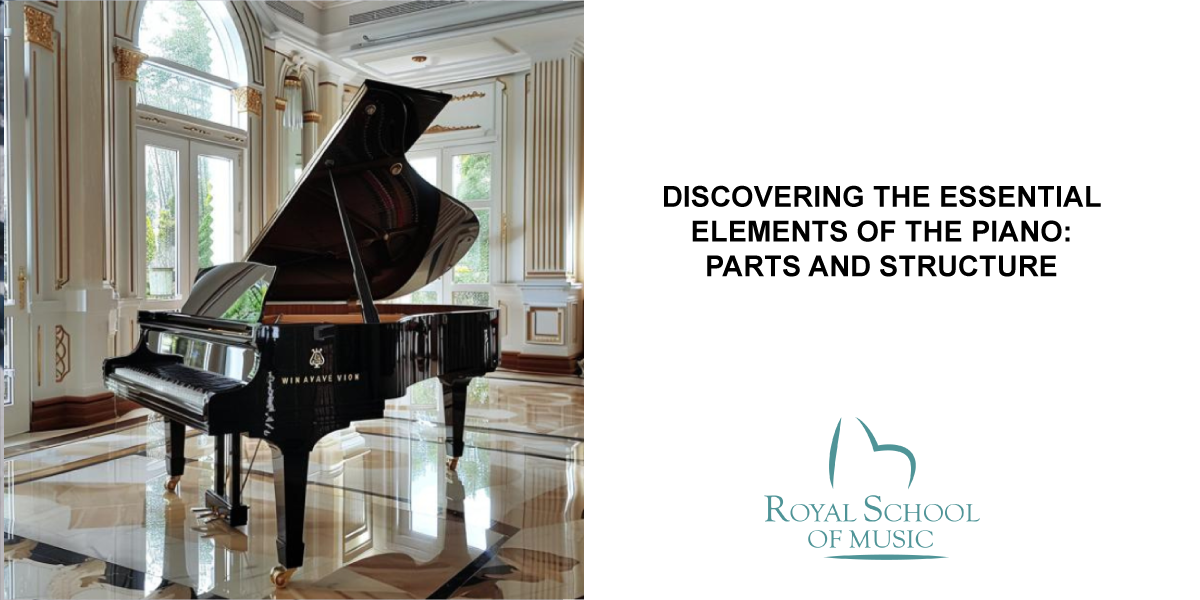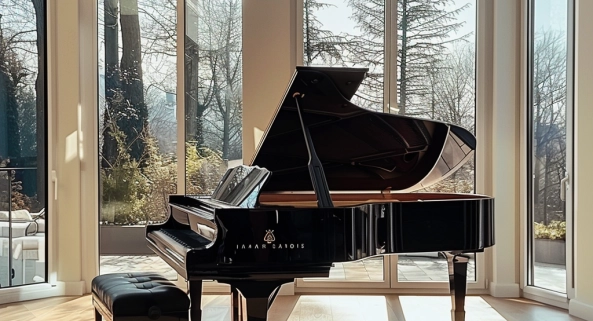Discovering the Essential Elements Of The Piano: Parts and Structure

The Piano, a Classic and Versatile Instrument, has Captivated Musicians and Audiences for Centuries. Its rich and powerful sound, along with its wide tonal range, make it one of the most popular instruments in classical music, jazz, pop, and many other musical genres.
The Fundamental Parts of the Piano
1. The Keyboard: The Heart of the Piano
The keyboard is perhaps the most recognizable and essential part of the piano. It is composed of a series of white and black keys representing musical notes. Each key produces a different sound when pressed, allowing the pianist to create complex melodies and harmonies.
- White Keys: Represent the natural notes (Do, Re, Mi, Fa, Sol, La, Si).
- Black Keys: Represent the altered notes (sharps and flats).
2. Strings and Hammers: The Internal Mechanics
Behind the piano’s front panel lies the mechanical part that makes it sound: the strings and hammers.
- Strings: Each key is connected to a series of tense strings that produce sound when struck by the hammers.
- Hammers: These small hammers strike the strings when a key is pressed, creating vibrations that generate the distinctive sound of the piano.

3. Pedals: The Final Touch
The piano generally has three pedals at the bottom of the instrument:
- Sustain Pedal (right): Holds the notes after releasing the keys, creating a resonance effect.
- Soft Pedal (left): Mutes the piano sound for a softer and more muted tone.
- Una Corda Pedal (center): Reduces the number of strings struck by each key, producing a softer and more delicate sound.
The Piano Structure: Vertical vs. Grand
- Vertical Pianos: Compact and Versatile
Vertical pianos, also known as upright pianos, are a popular choice for those with limited space. Their vertical design makes them ideal for apartments and smaller spaces without compromising on sound quality.
- Grand Pianos: Elegance and Sonic Power
Grand pianos are the crown jewel in terms of elegance and sound. Their horizontal design allows for longer strings and a more complex mechanism, resulting in a more resonant and deep sound. They are the preferred choice for concerts and large stages.

Conclusion: Exploring the World of Piano
Whether you are playing for the first time or simply fascinated by the magic behind this instrument, understanding the essential elements of the piano is crucial. From the keyboard to the strings and pedals, each part works in harmony to create beautiful melodies and emotions.
We hope this guide has provided you with a better understanding of how the piano works and has sparked your curiosity to continue exploring this wonderful musical world. Keep practicing and discovering the beauty of the piano!
Thank you for joining us on this journey of piano discovery!
Do you have any piano topics you would like to explore in future articles? Leave us your ideas in the comments! And feel free to share this blog with other music and piano enthusiasts.
Until next time, may the music continue to resonate in your life!

Buying a Piano
A musical instrument embodies skill, discipline, and passion, making its use and learning highly recommended from childhood. Moreover, for teenagers or children, it presents an opportunity to broaden their knowledge and future possibilities in which music can be a key aspect.
Buying a piano is an investment that will undoubtedly provide many moments of satisfaction and fulfillment.



